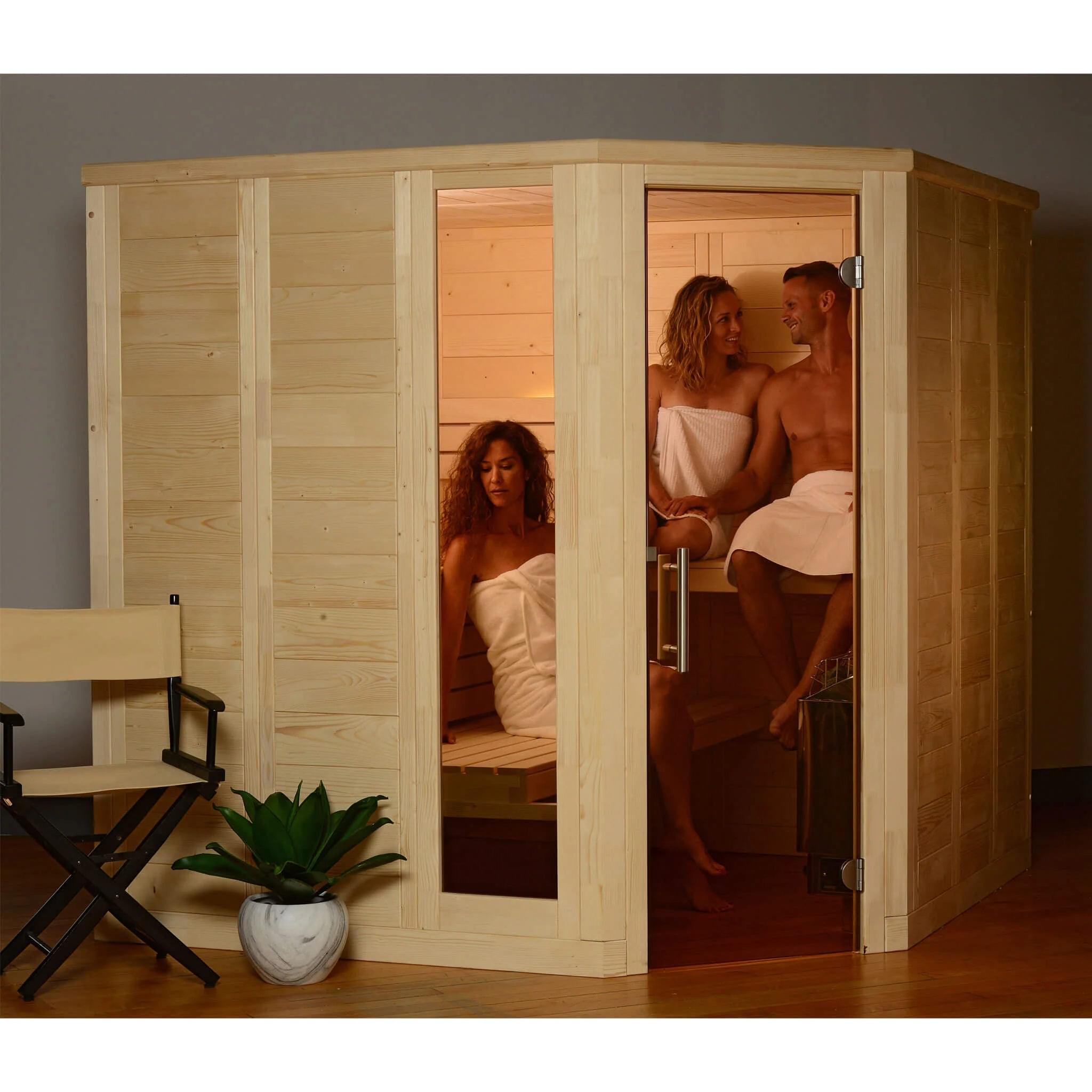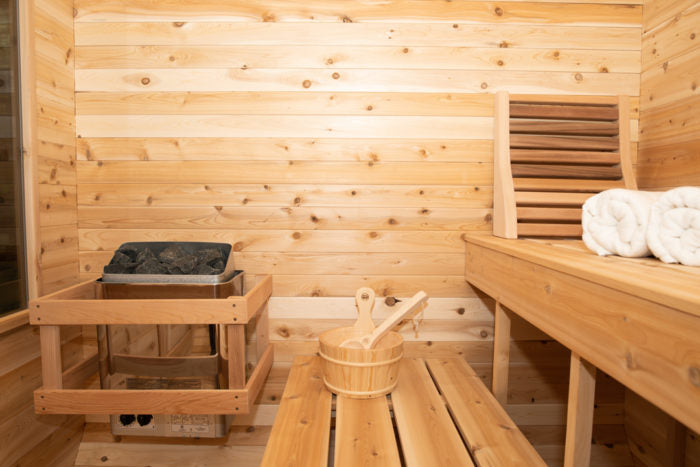Indicators on Traditional Sauna You Should Know
Table of ContentsThe Best Guide To Traditional SaunaThe Ultimate Guide To Traditional SaunaThe Buzz on Traditional SaunaGet This Report about Traditional Sauna
Most of the weight lost in a sauna is water loss and is re-gained upon rehydrating. Without a doubt sauna can be a vital component of a healthy weight loss program. To take a look at the distinctions between typical and IR saunas, I will certainly divide these right into proven, theoretical, and made distinctions.Therefore, the hottest point in the saunawhich is at the ceiling straight over the sauna heateris commonly between 185 and 190 F. Traditional Sauna. Claims that a traditional sauna surpasses 200 F is merely not true and not appropriate for electric saunas sold in the United States. The temperature level for a far-infrared sauna is normally set between 120 and 140 F; nonetheless, unlike the typical sauna, the goal in and IR area is not to attain a heat
Due to this, the temperature level difference is virtually pointless, since profuse sweating causes both sauna types, however the method of heating up the body is various. In an IR sauna the bather will feel hot and will certainly sweat a lot, yet at much lower temperatures. Thus, if the objective is to invest longer periods of time in the sauna, the IR sauna is a good option.

The Best Guide To Traditional Sauna
When the heat is achieved, the components cycle on and off to maintain the high temperature. Most traditional sauna users delight in pouring water over the rocks to create vapor to elevate sauna moisture levels. The advantages of putting water over the rocks include: making the room a lot more comfy, dampening the nasal flows, and enabling the use of aromatherapy by blending important oils with the water.
In a far-infrared sauna, the warm front pass through the body to properly warm the body and elevate the body core temperature level. To attain this boosted temperature, Far-infrared emitters produce infrared power which is close to the exact same wavelength as that which the body normally emitsoften described as the "Crucial Variety" of 7 to 14 microns), so the power is well received by the body.
When the go now power enters the body, it triggers the body temperature level to increase and eventually results in perspiration. In an infrared sauna it is very important for the emitters/heaters to remain on nearly regularly. Because there is no mass of rocks to preserve heat, the sauna will cool down if the emitters turned off.
As pointed out above, the sauna bather in an infrared room wishes to position himself in front of operating emitters to get optimal gain from the heat. The heating time for the 2 areas can be extremely different, relying on exactly how the rooms are used. For a traditional sauna, a bather needs to permit 30-40 mins for the room to achieve a wanted temperature level and to properly pre-heat the rocks.
7 Easy Facts About Traditional Sauna Described
A well built sauna will usually attain a temperature level of 150-160 F in about 30-40 mins (Traditional Sauna). For hotter temperature levels, the space might require to warm for a longer duration. When the area accomplishes set temperature, the heater will certainly cycle on and off, generally running concerning 50% of the time. The shielded wall surfaces and the warmed rocks will maintain the space hot and at secure temperature levels.
To some, 15 minutes was "wasted" while website link the infrared energy heated up the timber panels as opposed to heating up a body, while others find a pre-heated space to be much more comfy and think a raised beginning temperature is essential to start sweating. The length of suggested usage for each and every space is approximately the very same (10-15 mins per session); however, due to the lower air temperatures and the capability to really feel the results of infrared heat faster than a traditional sauna, it is not unusual for an individual to spend a total of 20-30 minutes in an infrared sauna.
Traditional saunas tend to be bigger (therefore make use of even more electricity) than infrared saunas, although typical saunas are certainly readily available in one and 2 person dimensions. For a two-person conventional sauna, 5x6 or 5x7 size is most prominent. The top bench can pleasantly seat 2 or 3 individuals and is likewise long sufficient to rest during the sauna session.


The average expense per kWH of electricity in the U.S. is roughly $0.11, so a 4.5 kW heating system will set you back about $.50 to compete one hour, if the heating unit runs constantly for one hour. Normally a sauna heating unit will compete 75% of the first hour and 50% of subsequent hours on since the components cycle once the set temperature is have a peek at this site achieved.
Traditional Sauna Can Be Fun For Everyone
A two person far-infrared room is normally physically smaller sized than a typical sauna, commonly concerning 4' x 4' or smaller sized. The IR heater is typically 1.5-1.7 kW making use of a 120 volt 15 amp plug-in solution. Since the area can be made use of sooner than a sauna room, we will certainly think the space is made use of for to of an hour consisting of warmth up time.
Finally, there is a seldom discussed distinction in the social experience between the two spaces. While our culture has shed several of the social benefit of the traditional sauna experience, it can be really socially gratifying. From family time in the sauna, to heart-felt conversations with significant others, to sauna partiesthe conventional sauna experience can bring about intimate mingling.
Most higher end infrared rooms include colored light treatment, audio systems and full-glass fronts.